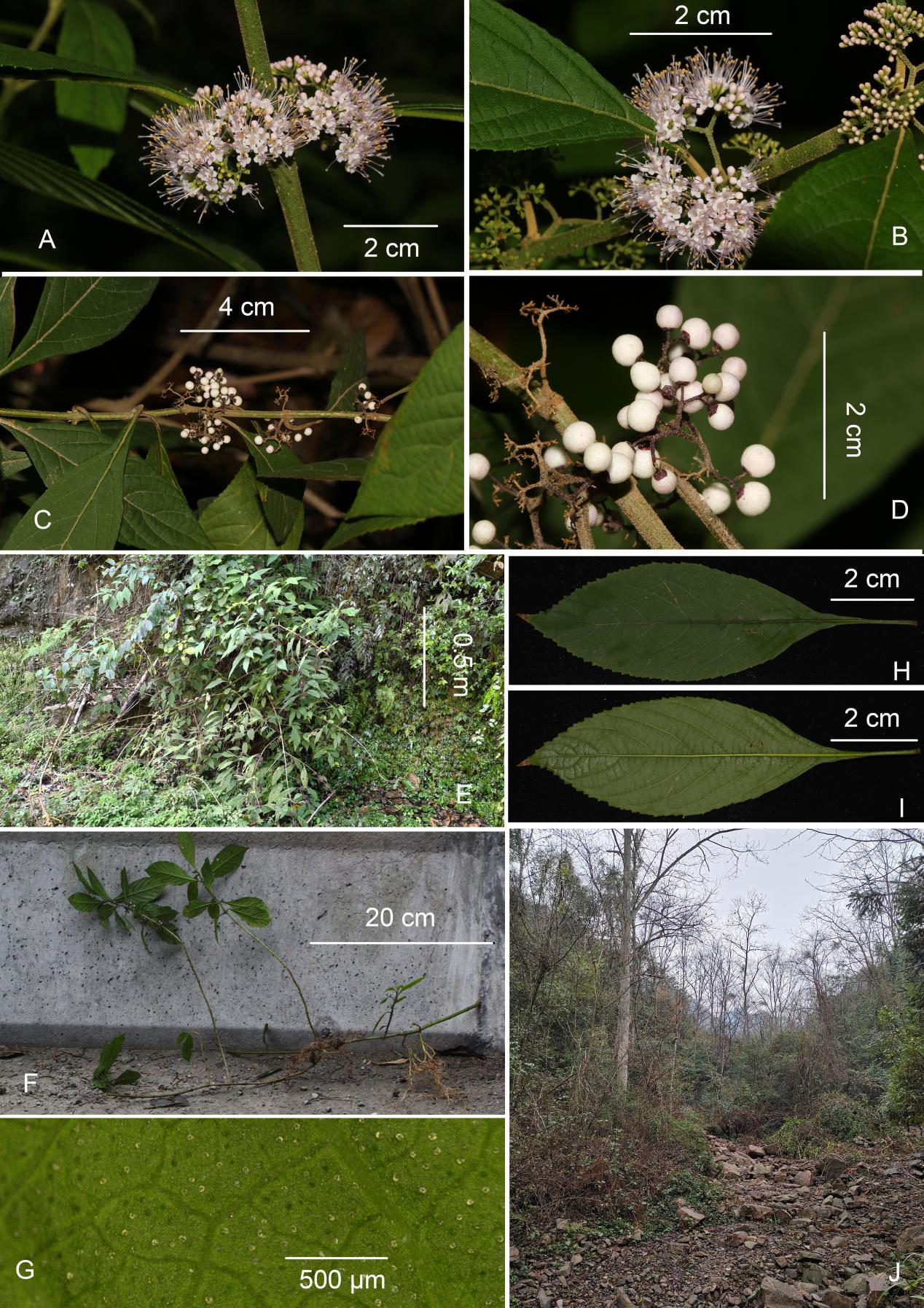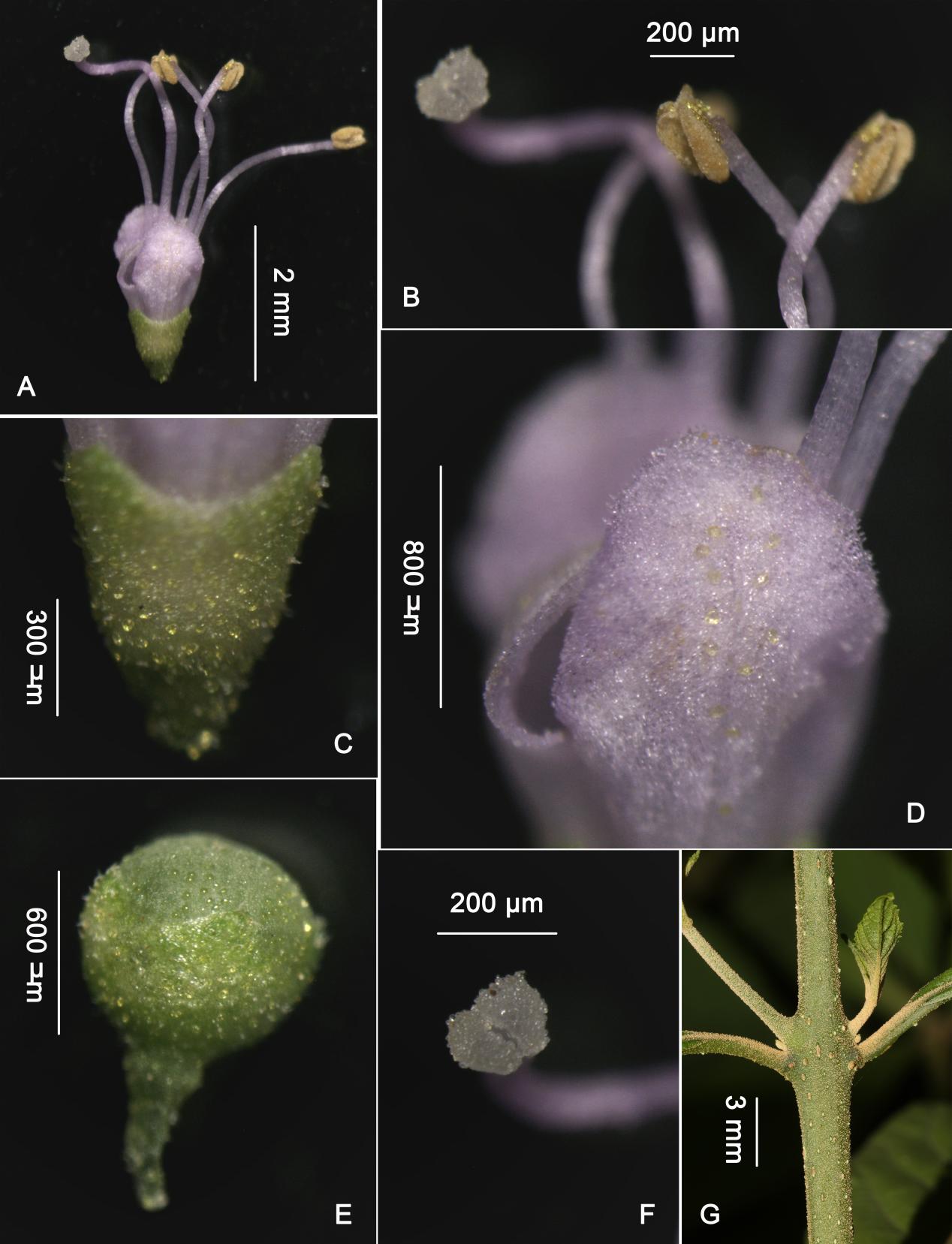Callicarpa L. (Lamiaceae) consists of 140 species that are trees or shrubs, and there are about 53 species in China, mainly distributed south of the Yangtze River. Some plants of Callicarpa are used as traditional medicine in China. In addition, they are also landscape plants with potential for utilization and development due to the abundant flowers and the colorful fruits.
In recent years, the wild Callicarpa resources are decreasing gradually. The establishment of Callicarpa germplasm repositories consisting of species introduced from the wild will help to conserve the genetic diversity of this genus and counteract the genetic erosion caused by natural or artificial elements.
Researchers from the Wuhan Botanical Garden (WBG) of the Chinese Academy of Sciences have collected 49 taxa of Callicarpa since 2021, representing 75% of the taxa in China. In the process, one Callicarpa species with a rather large population cultivated in WBG caught the researchers' attention. The species has procumbent branches, evergreen leaves, white fruits, scarless nodes, and stellate pubescence-free fruits, which distinguish this species from all other known Callicarpa species.
Specimens of this species were collected in Yongshun and Shimen, Hunan, China. Based on detailed morphological comparison and molecular phylogenetic studies, the researchers determined that it was a new species and named it Callicarpa yongshunensis Wen B.Xu, Xiao D.Li & Yan L.Liu.
The species is morphologically similar to C. luteopunctata H. T. Chang and C. giraldii Hesse ex Rehd. in the inflorescence, glandular color and leaf shape features, but differs in its procumbent, evergreen shrub and white fruits; while its white fruits are similar to those of C. longifolia Lamk, but its procumbent, scarless nodes and stellate pubescence-free fruits distinguish it from the latter.
The study entitled "Callicarpa yongshunensis (Lamiaceae): A new species from Hunan, China" was published in PhytoKeys.








